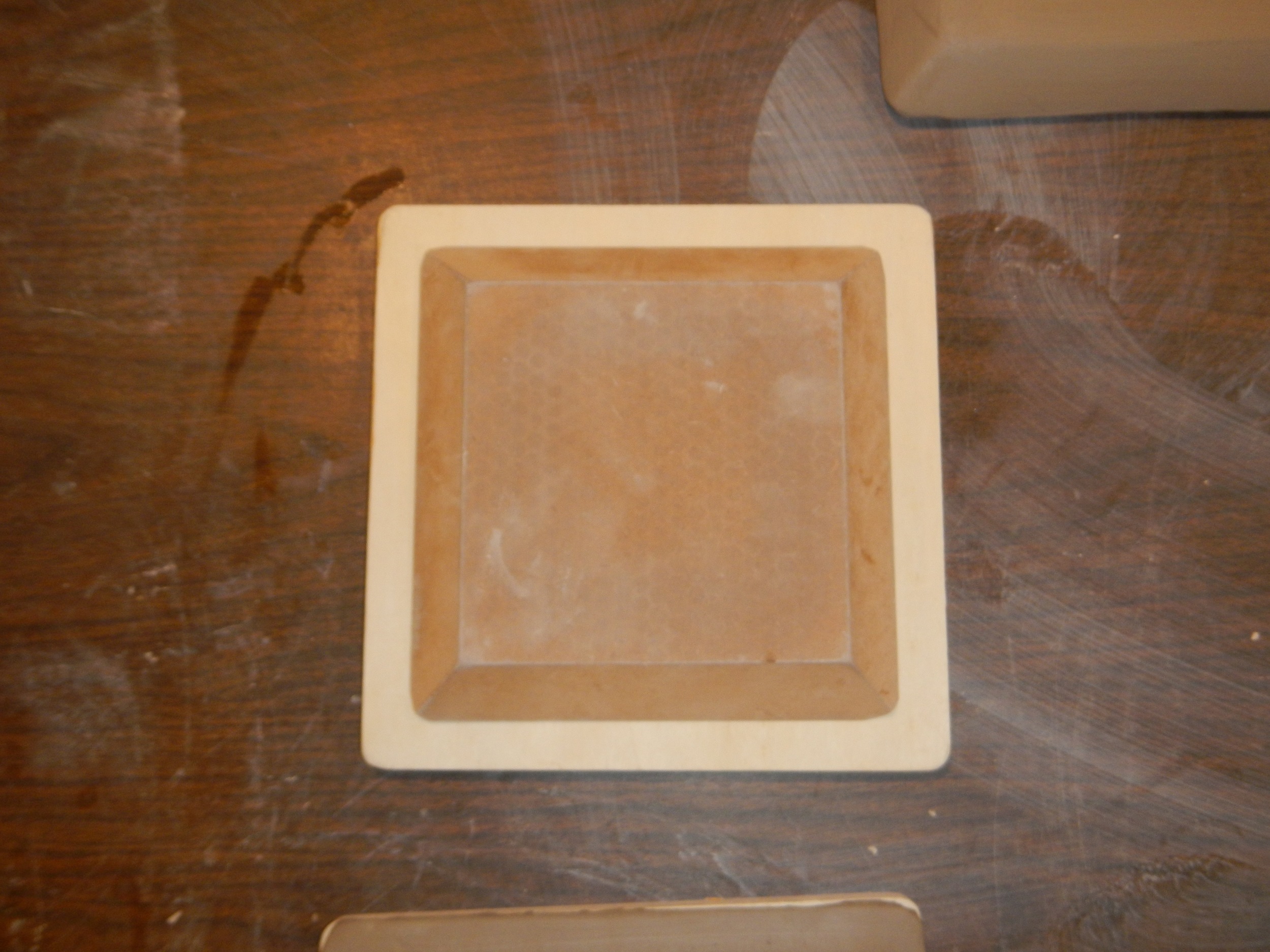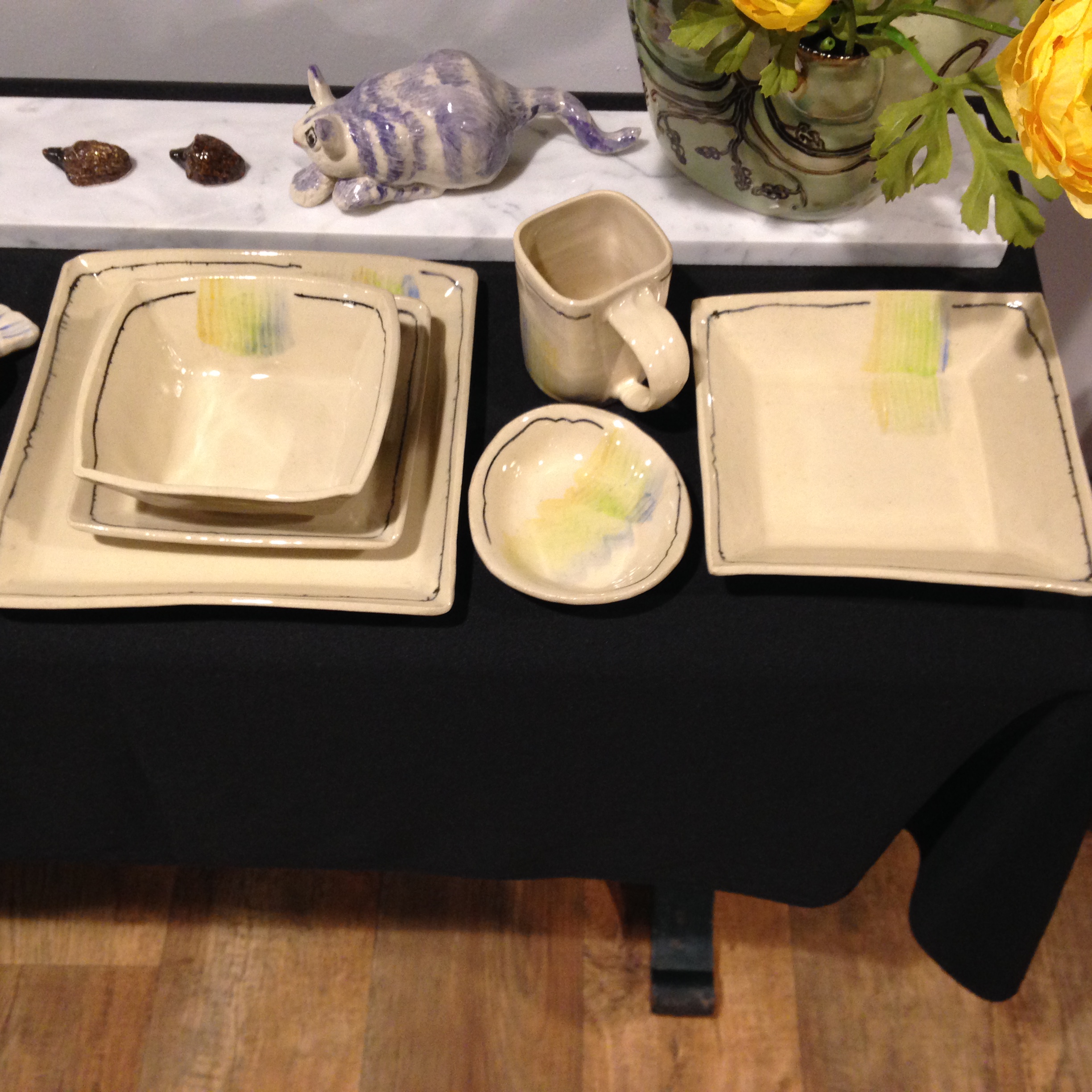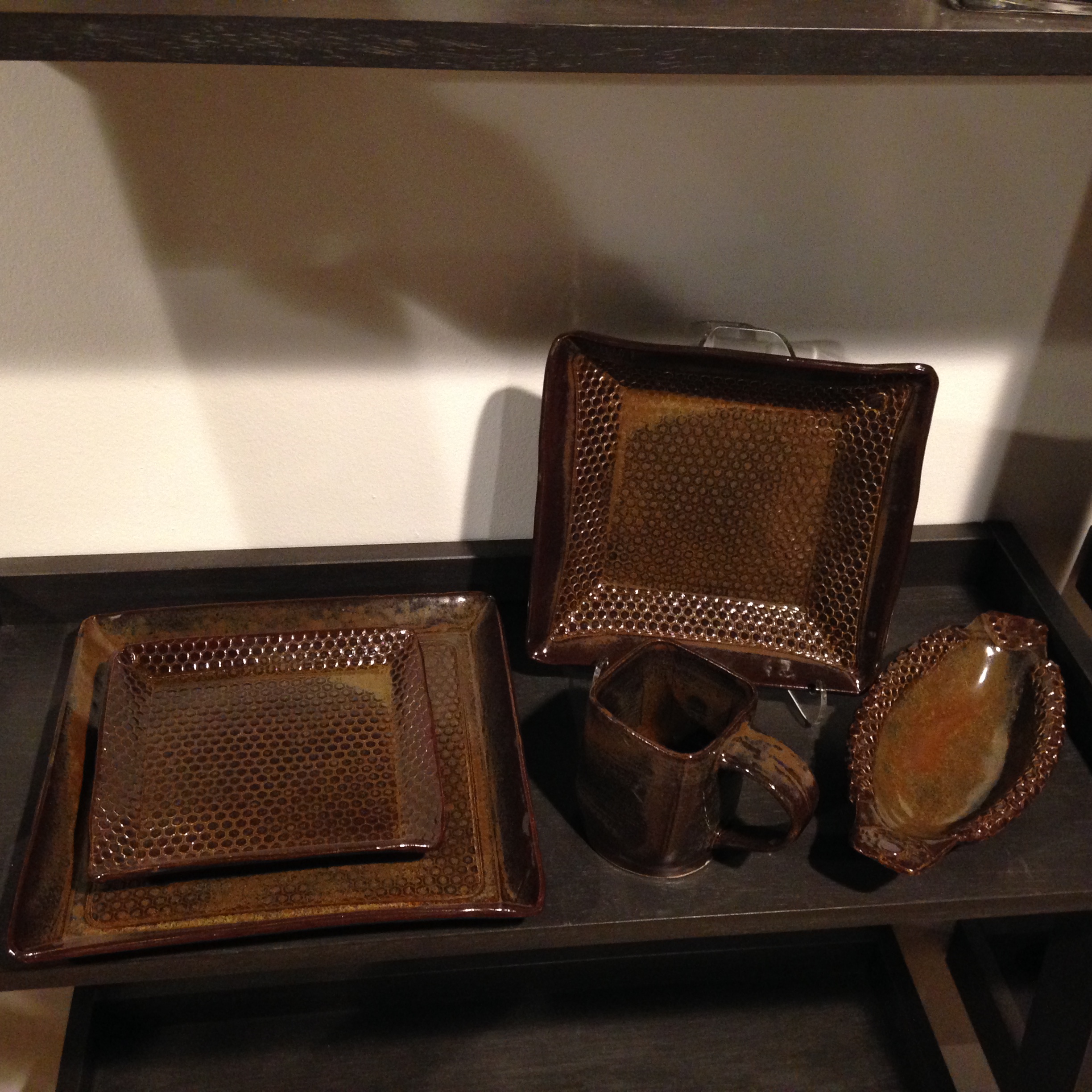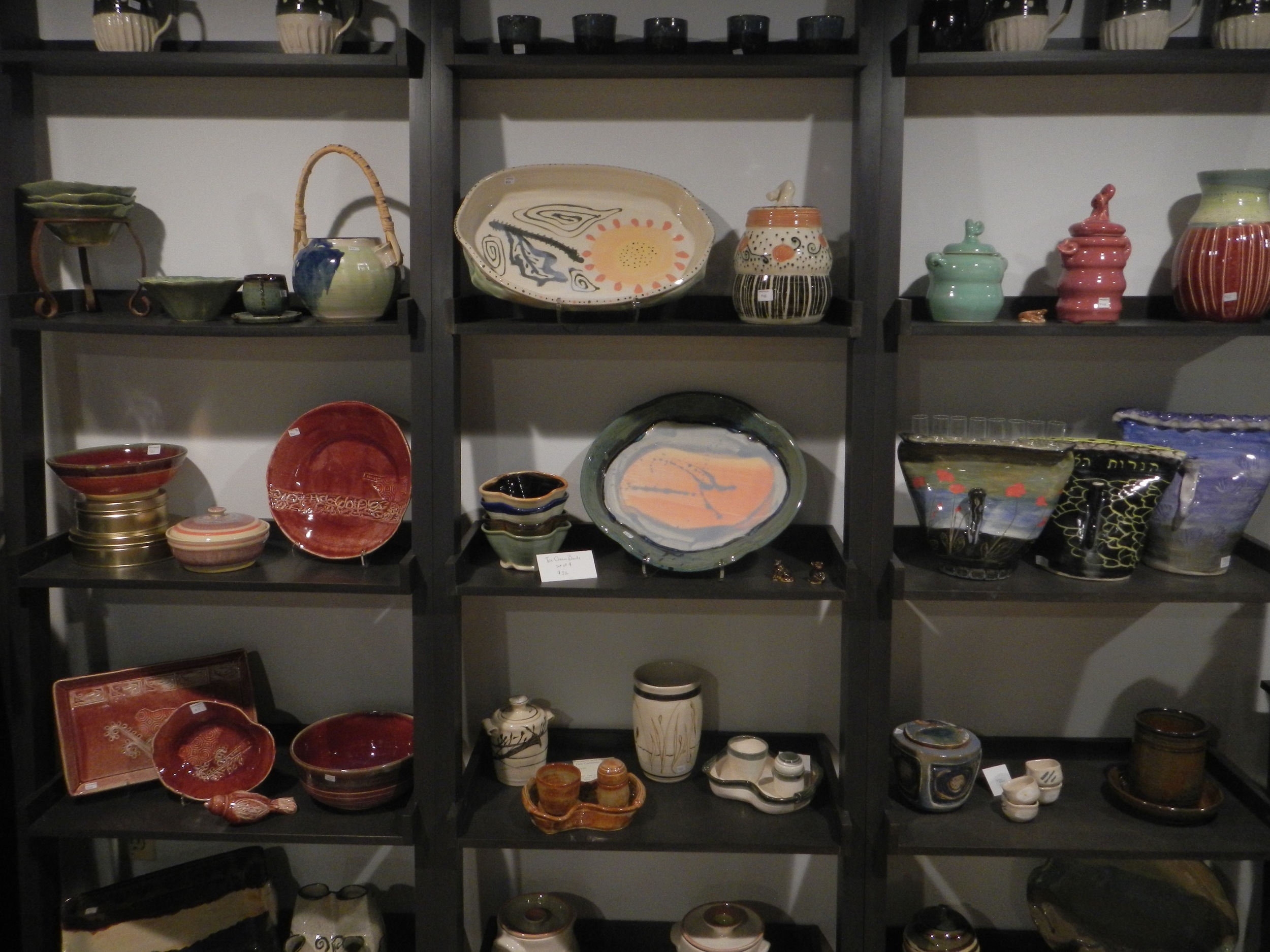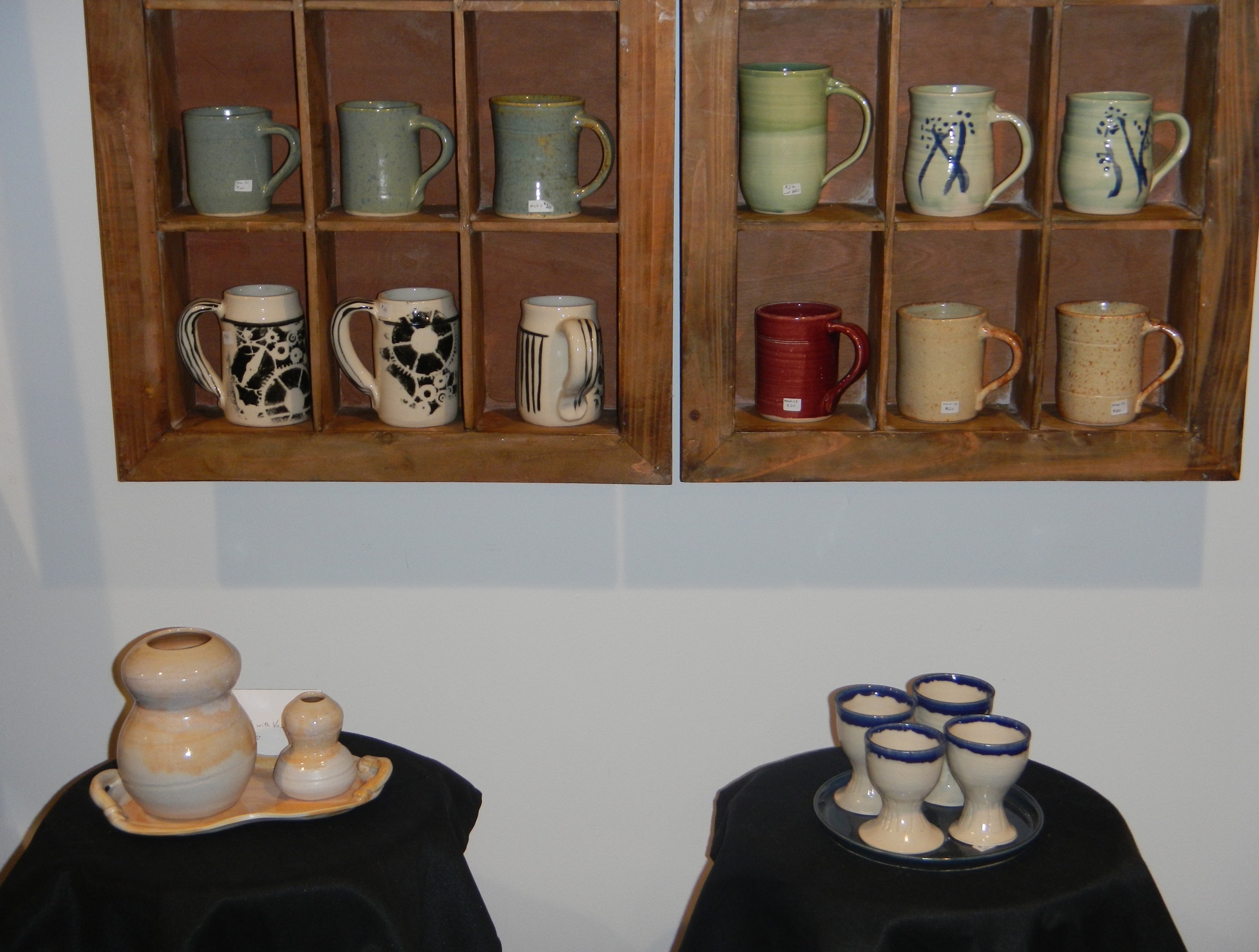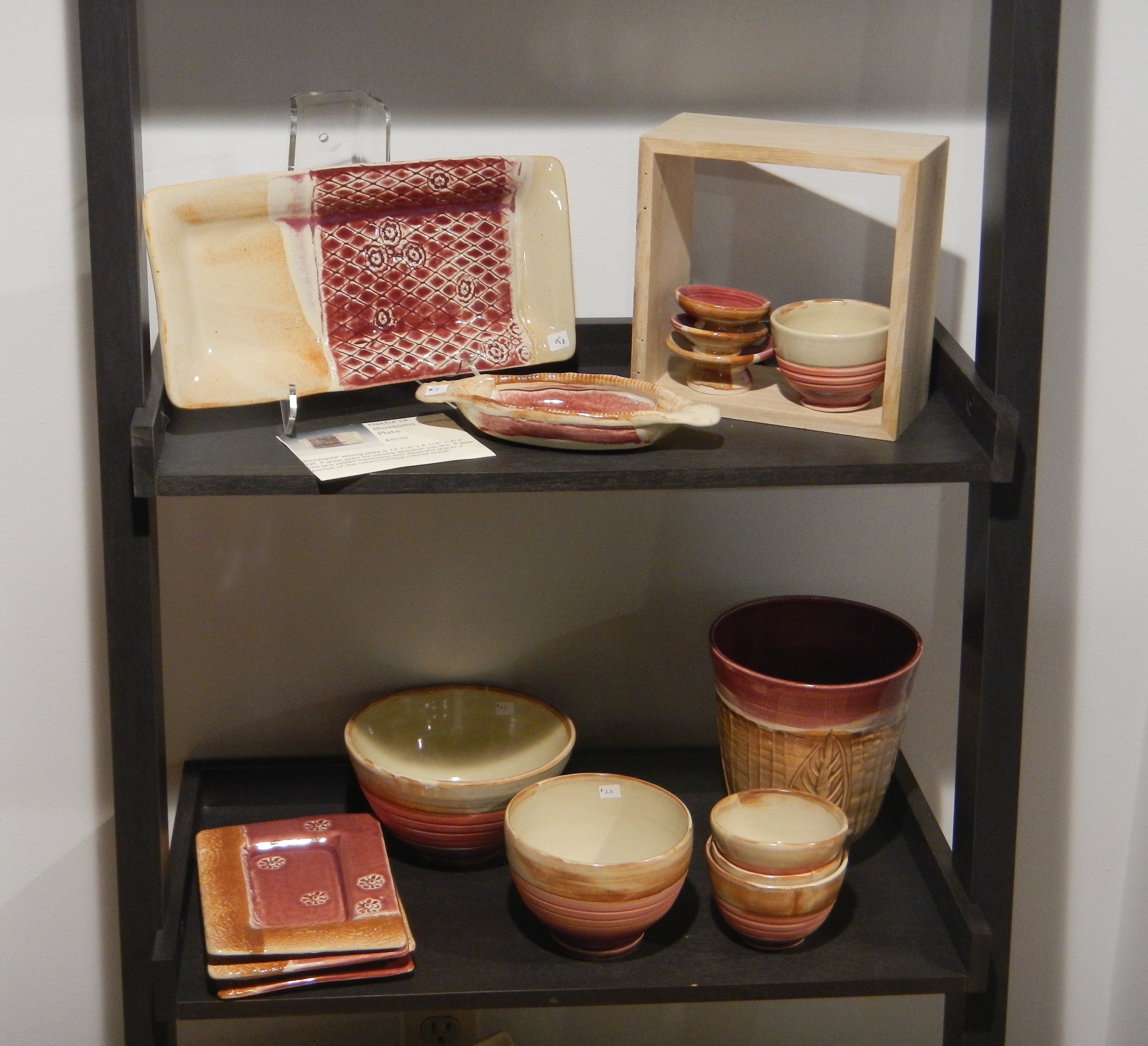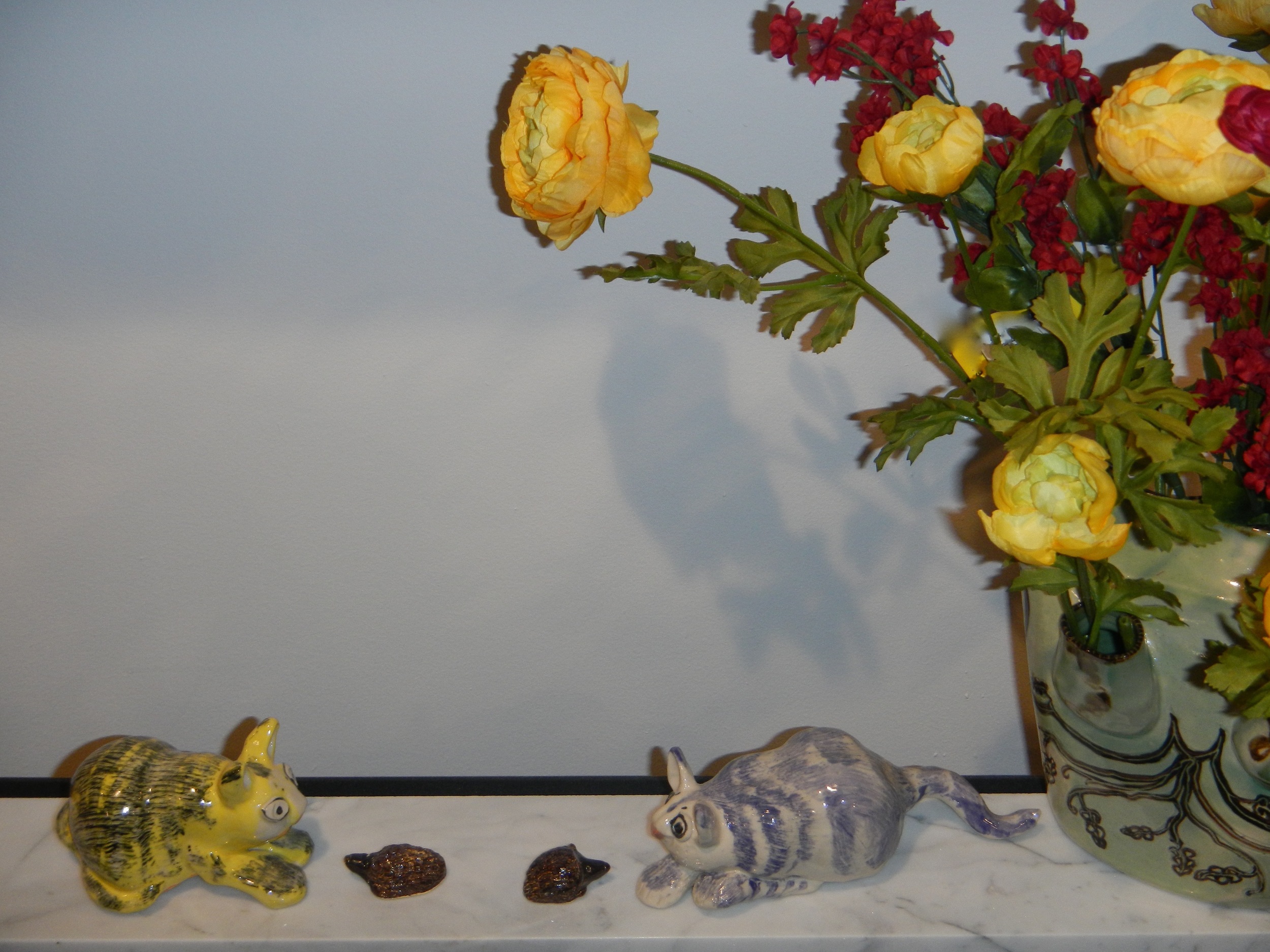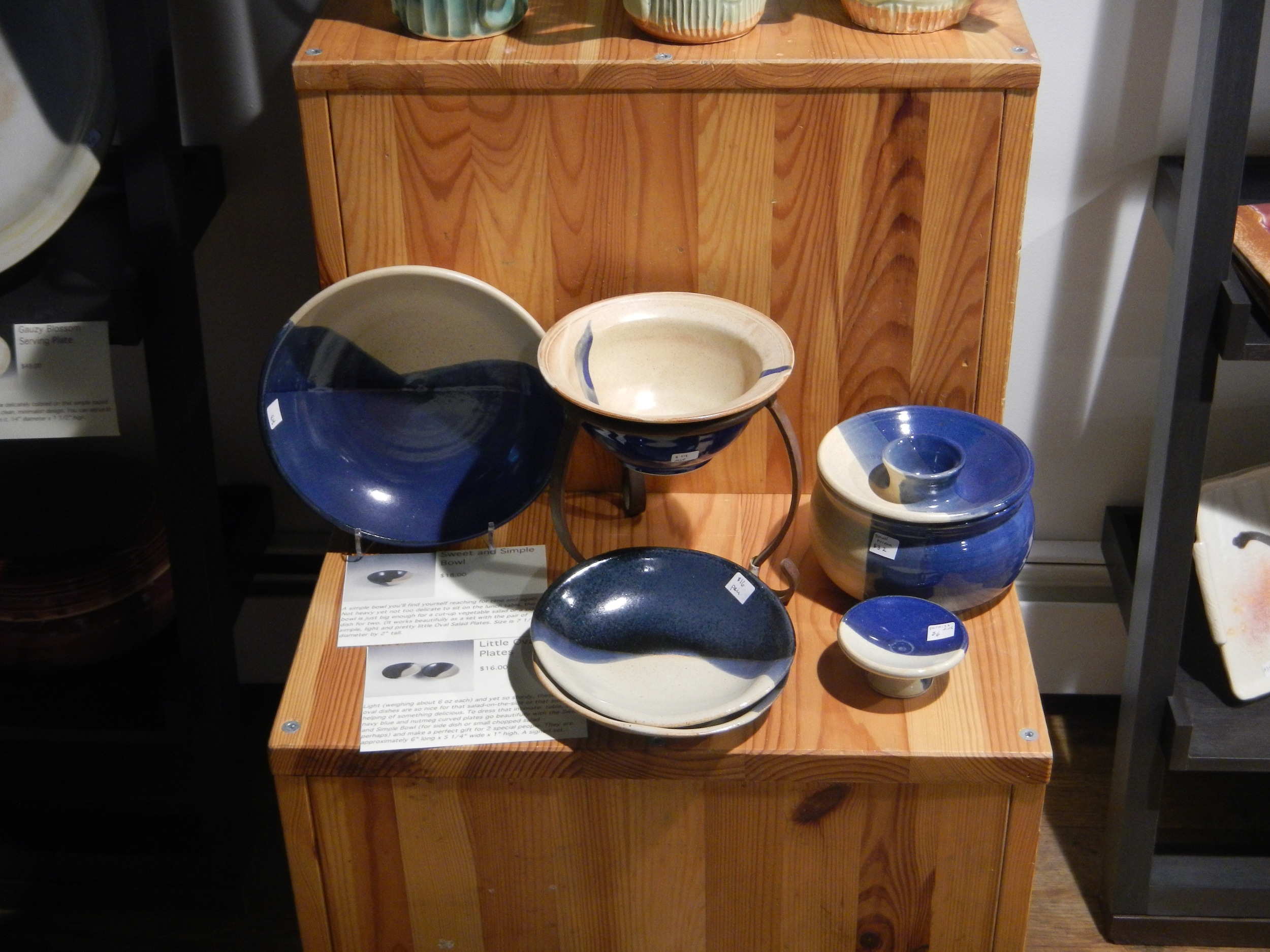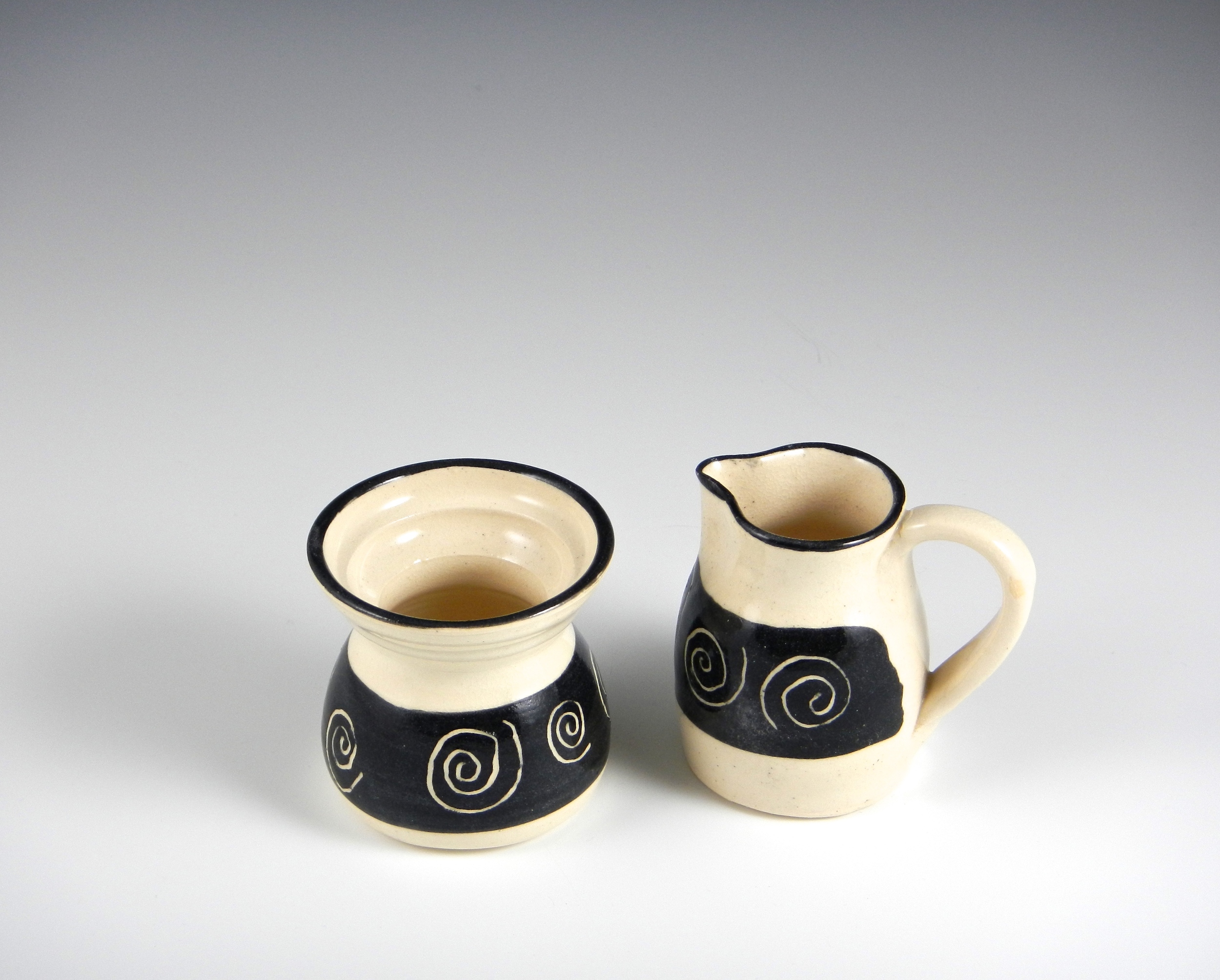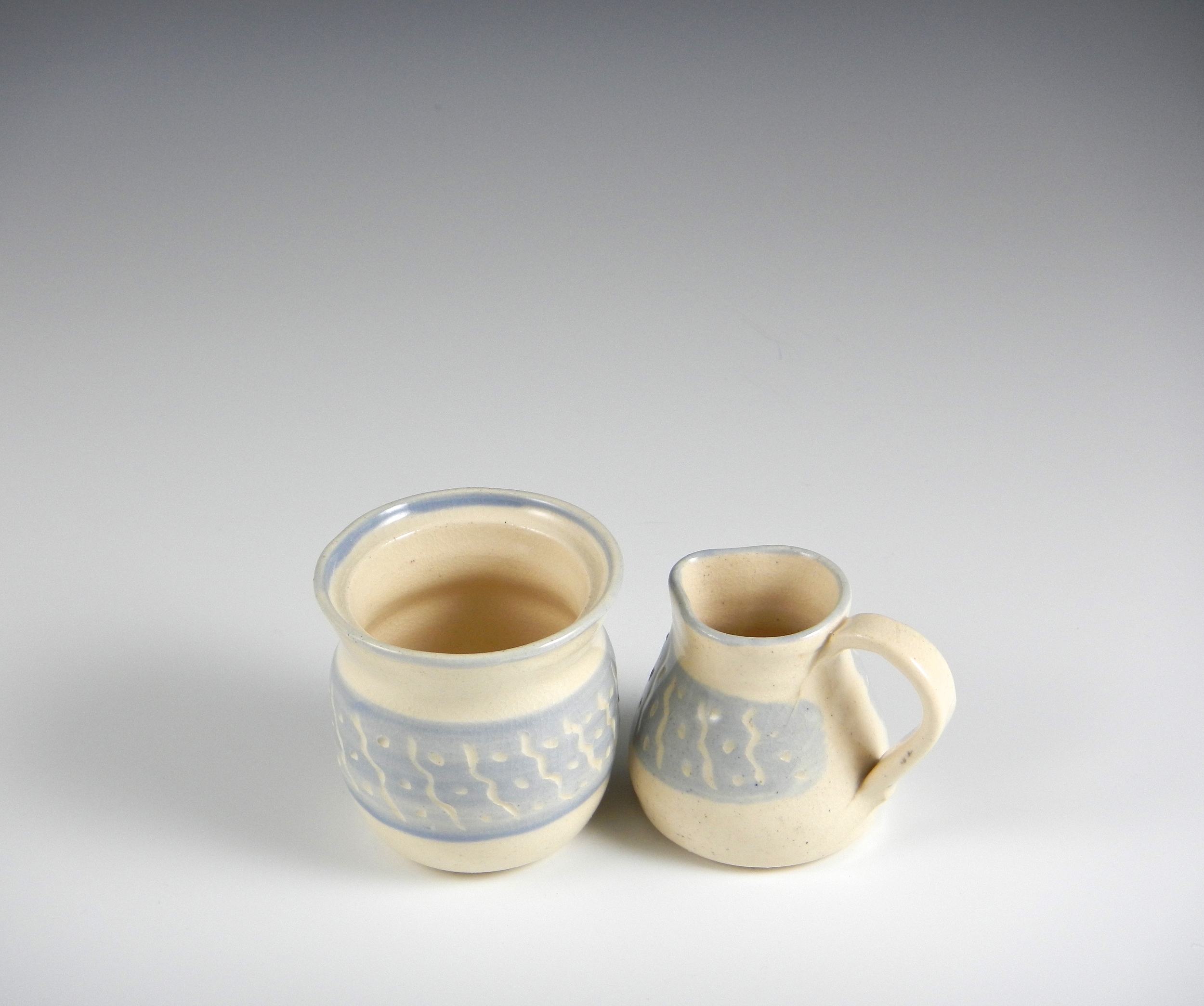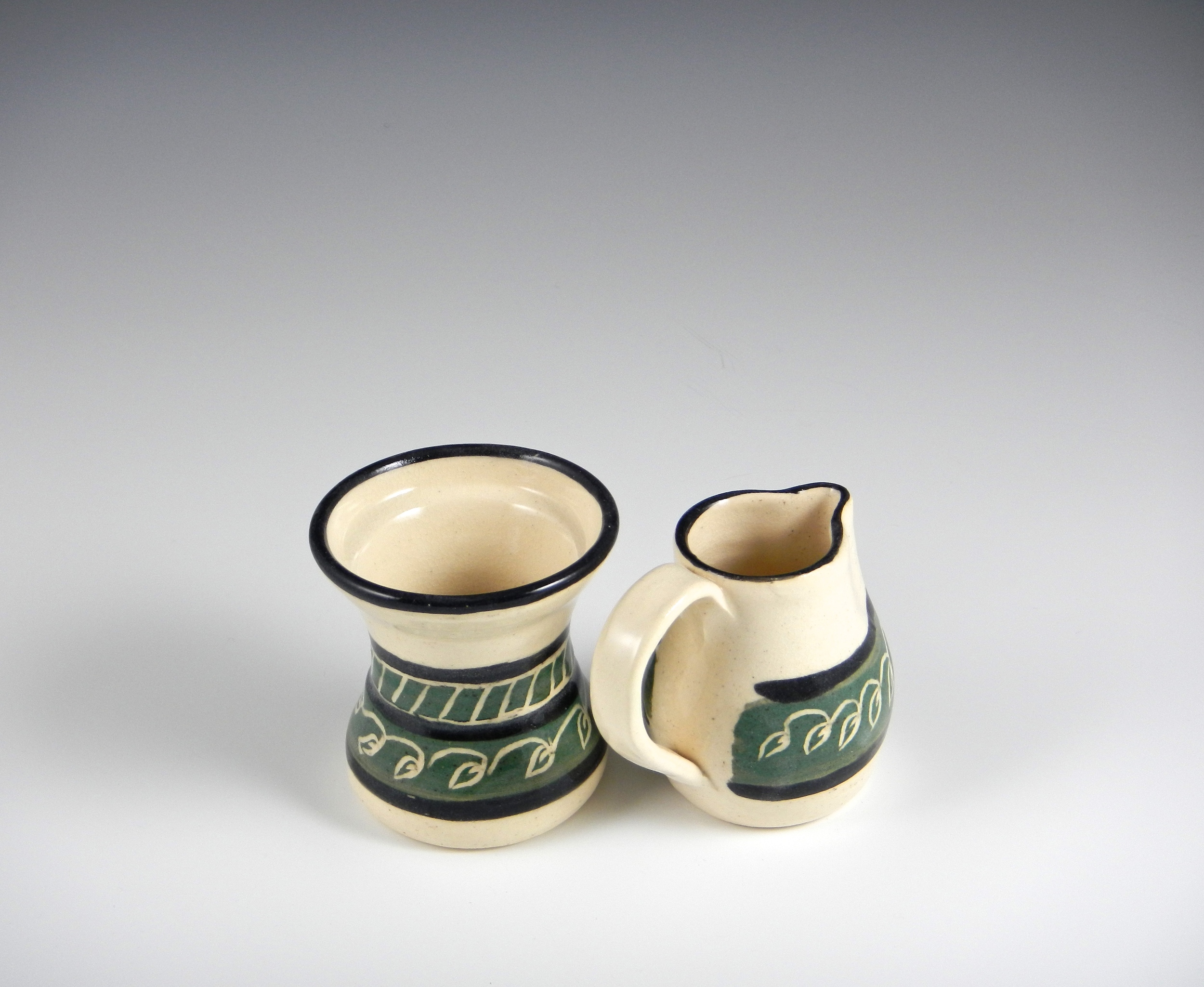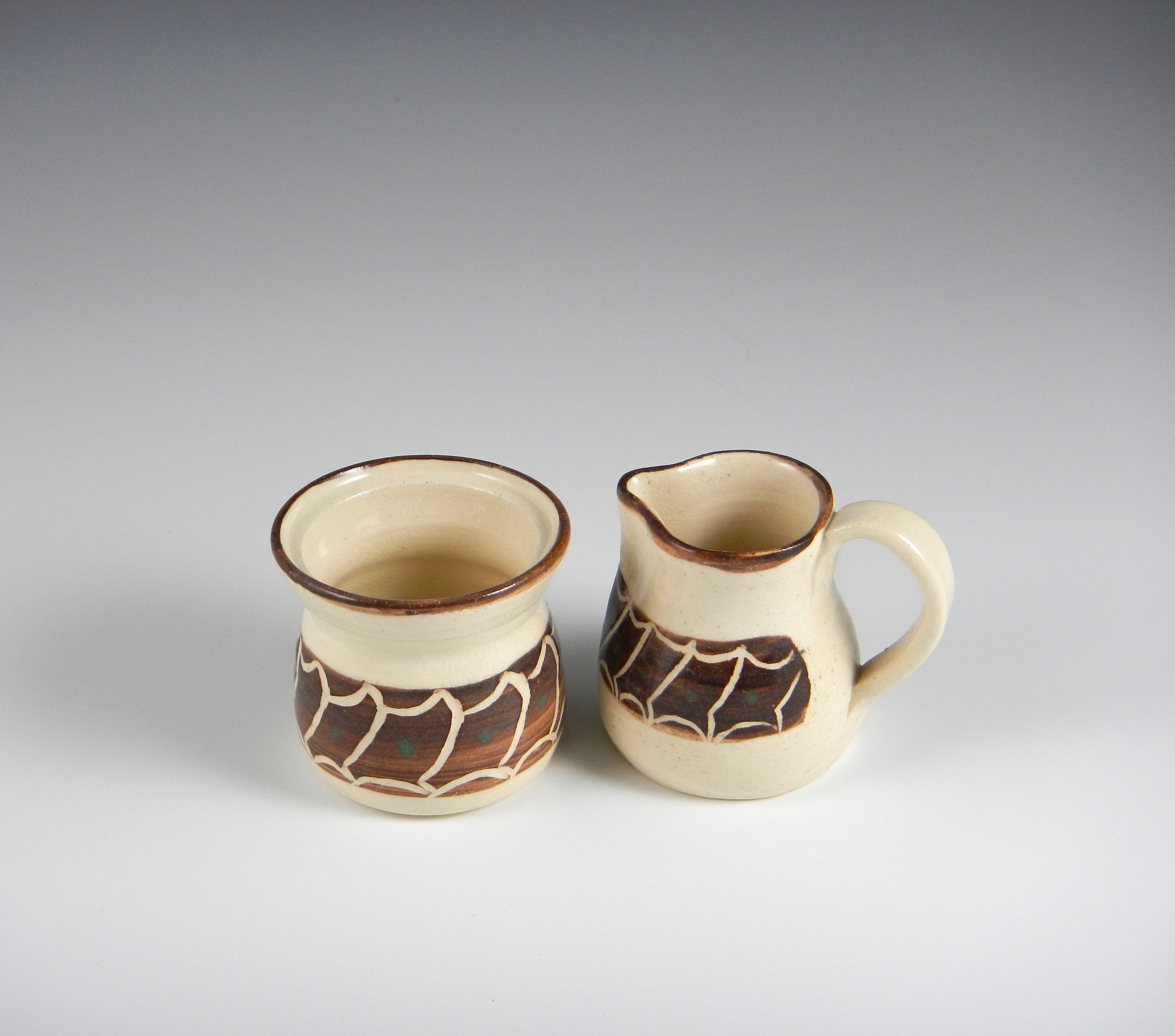I'm often asked, "How's the pottery going?"
It's going well, thanks- I'm excited about it. After all these years of making pottery, I'm finally building a business.
Since most shows are Saturday/Sunday combos, and I don't "do" Saturdays (they're all booked forever), I've had to think of how to build a different sort of business.
So I'm making a certain amount pottery, enough to have fresh pieces on hand every couple of months, and the rest of my time I am working a whole lot on those other parts of my business.
Lately I've been working with a consultant and building business infrastructure. It's time to grow my business sensibly. There are so many moving parts to a business.
For example, we've been creating a better annual calendar of work with realistic finish dates. Also, we've been planning a couple of types of sales in my studio gallery, and working on how best to do them. I've been scheduling couple pottery-date nights and the occasional family-group pottery session. I've wanted to bring people into the studio (it's so solitary!) and create an alternate source of income to supplement the pottery sales, but I hadn't done these things until lately.
Also lately, I took an online course on branding, licensing, and writing about my craft, given by two fine and thought inspiring potters, Ben Carter and Molly Hatch. That was a rare and timely opportunity. I'm always reading and learning about my art and craft.
Luckily I'm still in the phase of life when I can keep trying to make better or other works in clay. That means growing and stretching creatively!
If I made pottery all day, every workday, and did nothing else, I'd be busy and justifiably tired. But at the end of the day I'd be left with... lots of pots. So now, instead, I make pottery some of the time, and spend lots of time on ways to get (and keep) organized and to let people know my studio and website and gallery are here and available.
After just about 30 years with clay, (I'll reach that milestone in March) I have lots to say and do on the subject, so I also teach several private students some of the ins and outs of this medium. That's a challenge, and it's fun because the students are so motivated. It also guarantees a certain amount of income while I'm figuring out some of the other parts of the business.
I'm glad to be using lots of energy and really engaging my brain. Some of my fellow clay folks may be saying hi to me at NCECA (National Conference for Education in the Ceramic Arts) in Rhode Island in March, and maybe one or two of you might be going to a great symposium in June (Women Working with Clay, at Hollins University in Virginia). I'm always bursting to talk clay with other people who work with it. I'm looking forward to meeting in person some of the potters whose blogs I follow.
Did you know there are lots of potters? While we're not a dime a dozen, being a tiny fraction as many as accountants, say, or bus drivers, or dental technicians, there are a bunch of us low-profilers out there. (Maybe there are as many of us as there are philosophers...) It's just that we do what we do pretty quietly, in our solitary studios, so you don't hear about us much. Not every one of us likes to write incessantly about pots like I do, either!
You probably know by now- I'm always looking for inspiration.




